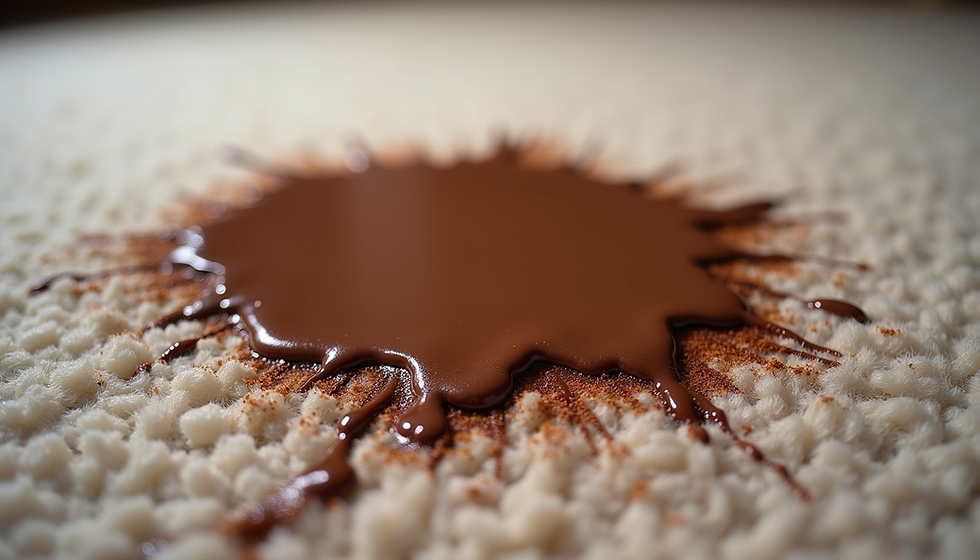How Long Should You Expect Carpet Installation to Take
- Vanshika Thareja

- 3 days ago
- 4 min read

When it comes to home improvement projects, few can transform a space as effectively as new carpet installation. Whether you want to refresh your living room, make a bedroom cozier, or improve a playroom's comfort, new carpeting can truly enhance your home. But one common question arises: How long does carpet installation take? By understanding the timeline for carpet installation, you can plan your project better and have realistic expectations.
In this post, we will discuss the various factors that impact the duration of carpet installation, typical time frames for various spaces, and helpful tips for ensuring a seamless installation process.
Factors Influencing Carpet Installation Time

Several factors can influence how long it will take to install carpet in your home. Here are some noteworthy considerations:
1. Size of the Area
The area where the carpet will be installed is a major factor. Larger spaces inevitably take longer than smaller ones. For example:
Small Bedroom: Installation may only take 2 to 4 hours.
Living Room: Installing carpet in a spacious living room might take 4 to 6 hours or more.
Statistically, larger homes typically require a full day; some estimates suggest 6 to 12 hours for entire homes.
2. Type of Carpet
The kind of carpet you choose can also affect installation time. For instance:
Plush Carpets: These require more meticulous work to ensure proper laying and may take longer.
Low-Pile Carpets: These are generally quicker to install.
Specialty carpets, such as those with intricate designs, can add to the time as they require precise cutting and alignment.
3. Subfloor Condition
The state of the subfloor is critical. If it needs repairs or leveling, this can extend the overall timeline. For example:
Well-Prepared Subfloor: Installation can be completed swiftly, often within the expected timeframe.
Damaged Subfloor: Repairs might add several hours or even days, depending on the extent of the issues.
4. Installation Method
Different installation methods also play a role in timing:
Stretch-in Installation: This common method, where carpet is stretched over padding and fastened with tack strips, is generally quicker.
Glue-down Installation: Takes longer because of drying time for the adhesive.
Carpet Tiles: Can be the fastest option as they often do not require glue.
5. Furniture Removal and Replacement
Removing furniture can add time to your project. If you're tackling this yourself, allocate several hours for the task. If you’re hiring professionals, ask if moving furniture is part of the service, as this can incur an extra fee.
6. Professional vs. DIY Installation
Hiring professionals can expedite the installation process. Experienced installers can complete tasks more swiftly and efficiently compared to a DIY approach. For example, a professional team can often finish a medium-sized room in about 4 hours, whereas a novice might take significantly longer.
Typical Carpet Installation Timeframes
Now that we've discussed the factors impacting installation time, let's explore some common timeframes based on various scenarios.
Small Rooms
For smaller spaces, like a bedroom or home office, expect the installation to take 2 to 4 hours. This includes removing old carpeting, preparing the subfloor, and installing the new product.
Medium-Sized Rooms
Medium rooms, such as a dining room or a bigger living area, can take about 4 to 6 hours. Variations depend on aspects like the carpet type and subfloor condition.
Large Areas
For larger spaces, like an entire home or open-concept living areas, you might need 6 to 12 hours. This estimate is contingent upon job complexity and the number of professionals involved.
Multiple Rooms
If you plan to carpet several rooms, account for additional time. Installers might handle multiple rooms at once or may need to finish one before moving to another. In this case, expect a timeline of 1 to 2 days, especially with furniture and subfloor preparation.
Preparing for Carpet Installation
To ensure that your carpet installation runs smoothly, consider the following steps:
1. Clear the Area
Before the installers arrive, make sure the space is clear of furniture and decor. Not only does this help speed up the installation, but it also protects your belongings from potential damage.
2. Assess the Subfloor
If you are handling installation yourself, check the subfloor for any damage or moisture issues. Repairing these problems beforehand can save time during the actual installation.
3. Choose the Right Carpet
Selecting a carpet that fits your needs is crucial. Consider factors like durability and style when making your choice, as this impacts both the look of your space and the ease of installation.
4. Schedule Installation at a Convenient Time
Choose a day or time that works well for your schedule. If you have a busy household, it may be best to have installation on a day when you can be home.
5. Communicate with Your Installer
If hiring professionals, make sure to discuss specific needs or concerns beforehand. Clear communication ensures everyone is on the same page for a successful installation.
Wrapping Up
In summary, the duration of carpet installation varies due to numerous factors such as the area size, carpet type, subfloor condition, and your choice between professional or DIY installation. Understanding these elements and preparing thoroughly will help set realistic expectations for your timeline.
Regardless of whether you're updating a single room or outfitting your entire home, knowing what to anticipate can ease the process. With effective planning and attention to detail, your carpet installation can be accomplished efficiently, allowing you to enjoy your new space sooner.




Comments